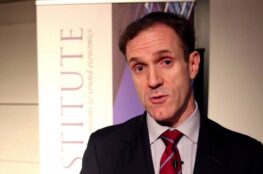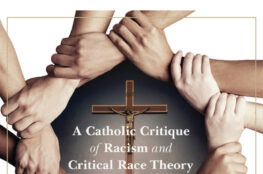Thursday’s post, “The Other Illiberal Catholicism,” became an inadvertent source of confusion—if not scandal—for some well-intentioned folks on Facebook and Twitter. To be honest, I don’t know why. The post was not written, as some have suggested, to dismiss the form, brand, school, etc. of illiberal Catholicism discussed and defended by Patrick Deneen. Rather, the post was intended to highlight the “other wing” of illiberal Catholicism, one which may fittingly be titled “traditionalist illiberal Catholicism” or, if one prefers, “integralist illiberal Catholicism” (or just “integralism”). The lines between the camps can get blurry, however—and that’s a good thing. Too often Catholics of a certain stripe grow complacent with insider speak and preaching to their own choir. They deny that there is anything useful or right to learn from another perspective and so they dismiss it a priori. Before anyone jumps to conclusions, I am not, in this instance, referring primarily to traditional Catholics. In today’s mainstream Catholic theological-philosophical environment, contestable positions such as the rejection of natura pura, the dismissal of the commentarial tradition, and the backwatering of Scholastic precision are used as litmus tests of (academic) orthodoxy. Communio, according to some, is the only real bulwark against the theological excesses and errors which broke out in the Catholic Church after the Second Vatican Council and any attempt to “dabble” in the pre-conciliar social magisterium is rendered automatically suspect.
The immediate problem here, of course, is that casting a dark eye on 19th and early 20th Century magisterial teachings is an affront to the so-called “hermeneutic of continuity” (HOC) Pope-Emeritus Benedict XVI championed during his reign on the papal throne. That’s not surprising. For despite their protestations to the contrary, many HOC proponents prefer to absolutize Vatican II at the expense of what came before, sometimes going so far as to appeal to “development of doctrine” in a manner which would have Blessed John Henry Newman spinning in his grave (if he were still in it). Perhaps if these folks applied the HOC in the way I suspect Benedict XVI intended—carefully, conservatively, and with a far firmer focus on continuity than development—they’d get a bit less cantankerous when traditional Catholics quote from Quas Primas or Quanta Cura.
It seems to me that the deeper problem with certain HOC champions, particularly when it comes to the classic social magisterium of the Church, is that it points toward principles of right order which are, one might say, “politically inconvenient.” It’s easier to point to Dignitatis Humanae (DH), declare “Development!,” and move on rather than reconcile the text with tradition. And for certain Catholics, still intoxicated by the false principles of liberalism, DH is a useful screen to block outsiders’ eyes from seeing what the Church championed only a century or so ago. It’s embarrassing to them when other Catholics—illiberal Catholics of the strict observance—refuse to let go of the classic magisterium and “get with the program.” Instead of engaging these illiberal Catholics directly and working toward a continuous interpretation of the magisterium, a portion of the HOC crowd blasts traditionalists as “Vatican II rejectionists” or “fascists” or worse.
Anyway, returning to the earlier post on illiberal Catholicism, let me be clear that drawing distinctions among various thinkers or “camps” of thinkers is not tantamount to rejecting everybody outside of one’s preferred camp. While I do have some substantive disagreements with the Communio theological orientation, that does not mean the illiberal Catholicism which is built off of that orientation is entirely wrongheaded or, as one person remarked, “Modernist” in the theological sense. In fact, if one goes back and rereads the earlier illiberal Catholic posting, one will see that I highlighted one thinker—Pater Edmund Waldstein—who drinks from both classic and contemporary theological wells. That is a very good thing; there needs to be more serious engagement “across the aisle” which is not predicated on immediate hostility.



